In Paris, the Louvre is planning a major exhibition devoted to Jacques-Louis David (Paris, 1748-Brussels, 1825), a great painter associated with the Neoclassical movement, the leading one in Napoleonic France. Curated by Sébastien Allard, General Conservator of Heritage, Director of the Department of Paintings at the Louvre, and Côme Fabre, Heritage Conservator of the Department of Paintings, with installations by Juan-Felipe Alarcon and Philippe Apeloig, the exhibition is simply titled Jacques-Louis David and is scheduled from October 15, 2025 to January 26, 2026.
David painted celebrated images depicting an era (the assassination of Marat, Bonaparte crossing the Alps, Napoleon’s coronation), and it is also through his paintings that we imagine the highlights of the French Revolution andNapoleonic Empire, and it is through his portraits that the society of that time comes alive. On the occasion of the bicentennial of his death in exile in Brussels in 1825, the Louvre wants to offer a new perspective on a personality and a body of work of exceptional richness and diversity.
The exhibition aims to highlight the inventiveness and expressive power of Jacques-Louis David’s painting, which is more charged with feeling than the imposing rigor of his paintings suggests. Spanning the long career of an artist who spanned six political regimes and actively participated in the Revolution, the exhibition brings together some 100 exceptional loans, including the imposing fragment of the Oath of the Pallacord (arriving from the Palace of Versailles) and the original version of the famous Assassinated Marat (Royal Museums of Fine Arts of Belgium, Brussels), the pinnacle of his art. Only the Louvre can meet such a challenge because the Paris museum has the world’s largest collection of the artist’s paintings and drawings, starting with his very large canvases. The last major monograph devoted to David was organized at the Louvre and the Palace of Versailles in 1989 on the occasion of the bicentennial celebrations of the Revolution. In light of research conducted over the past three decades, the 2025 exhibition presents a new synthesis that reveals the unprecedented richness of a career that blends art and politics.
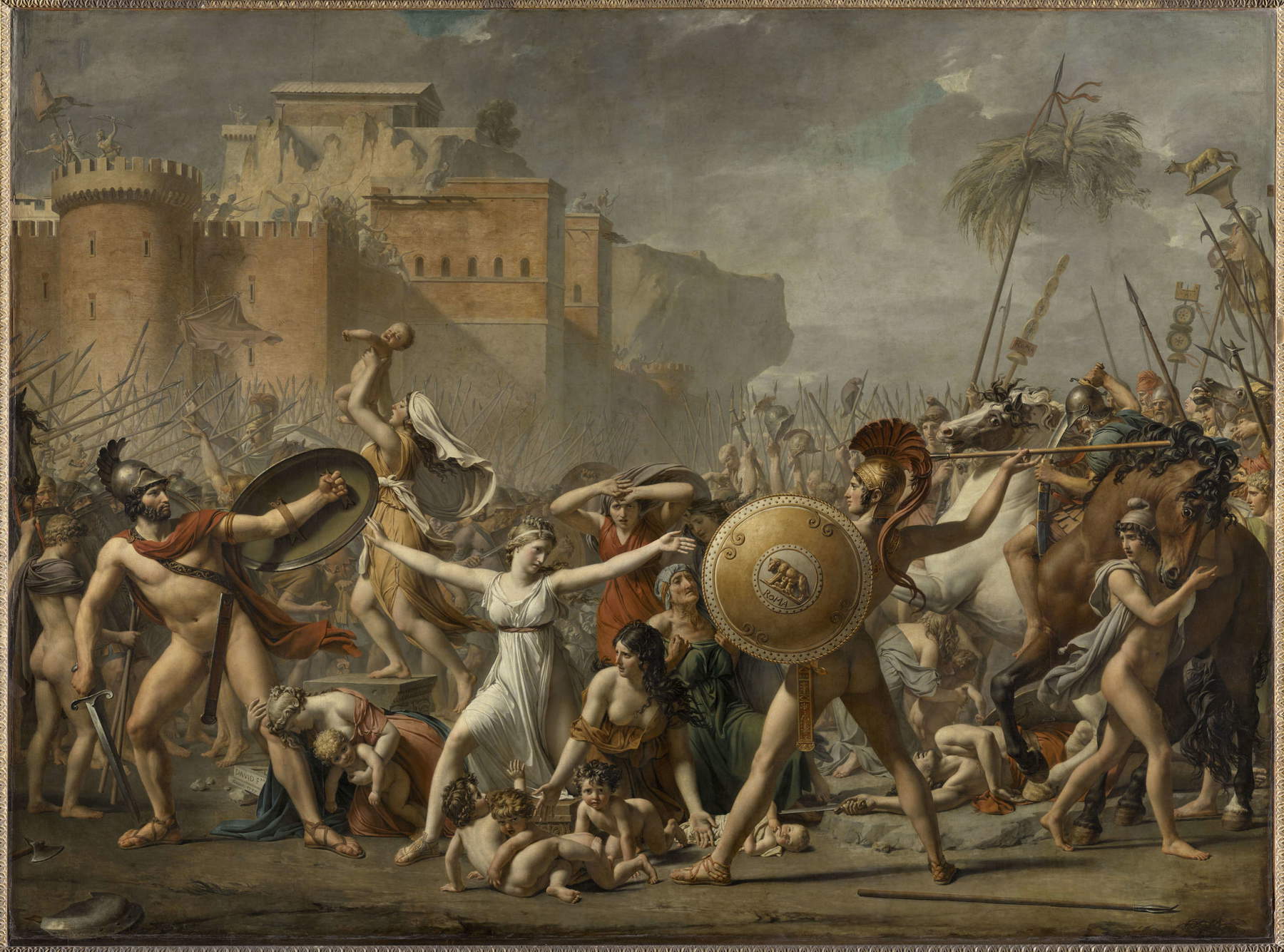
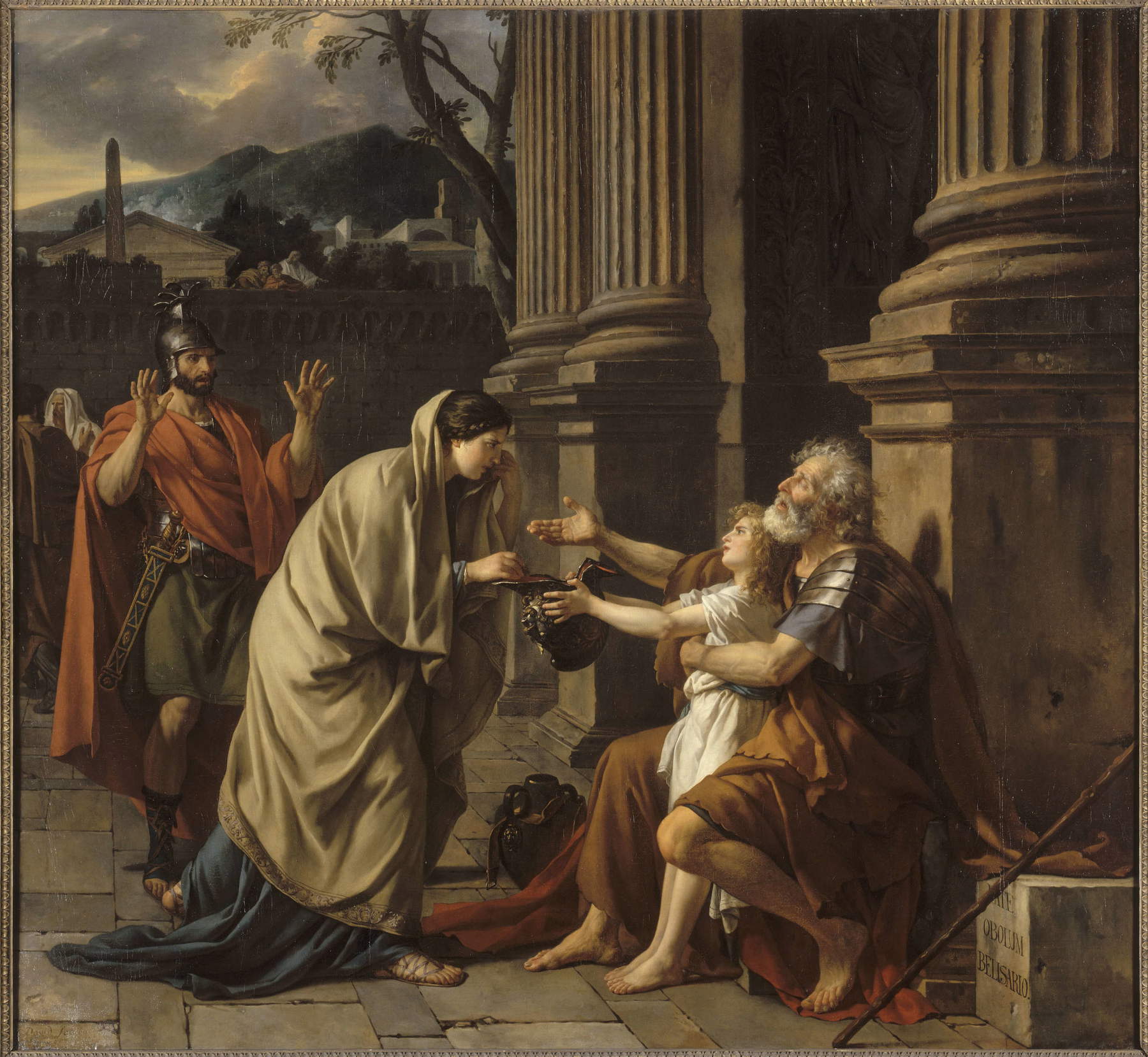
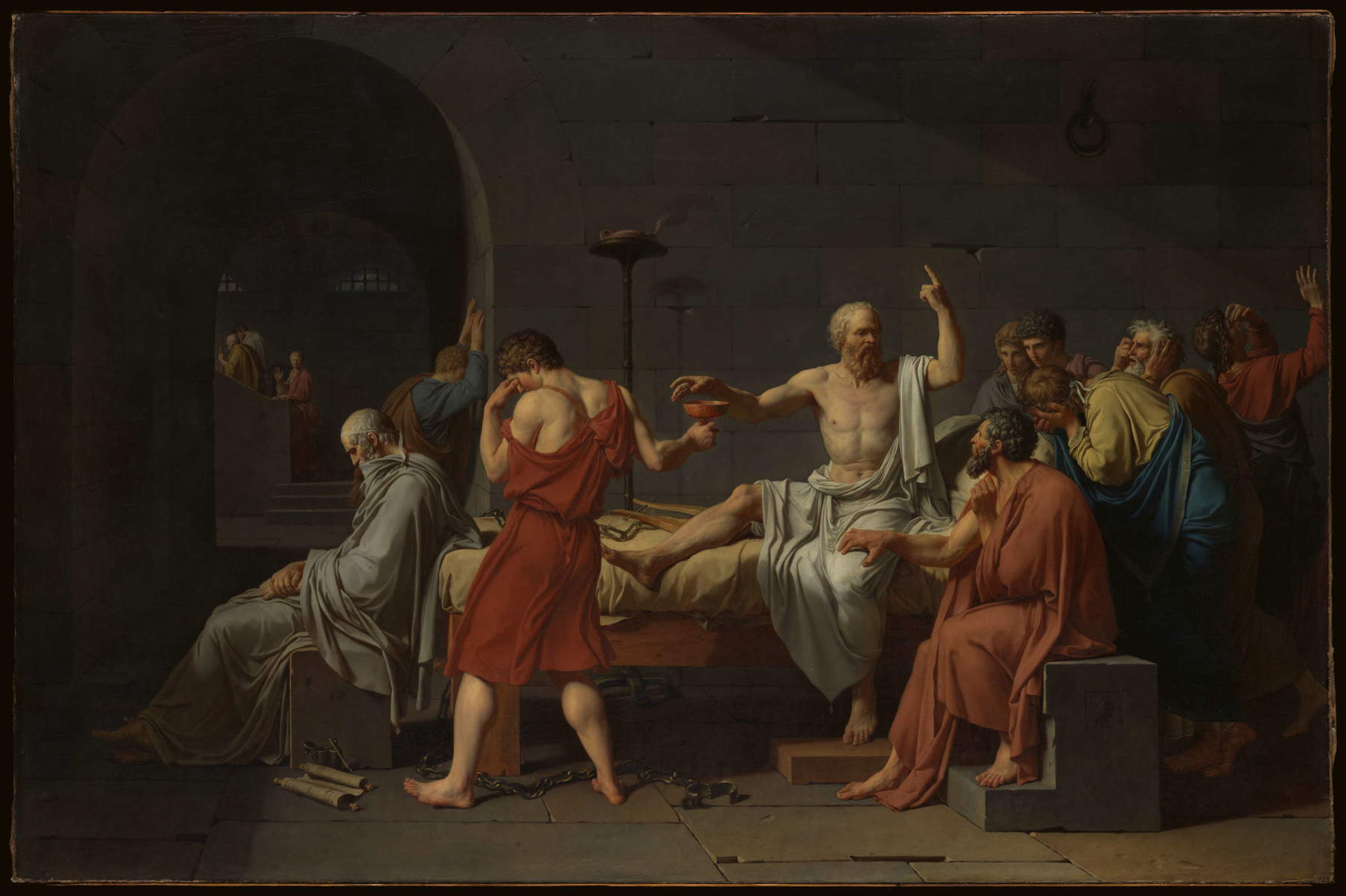
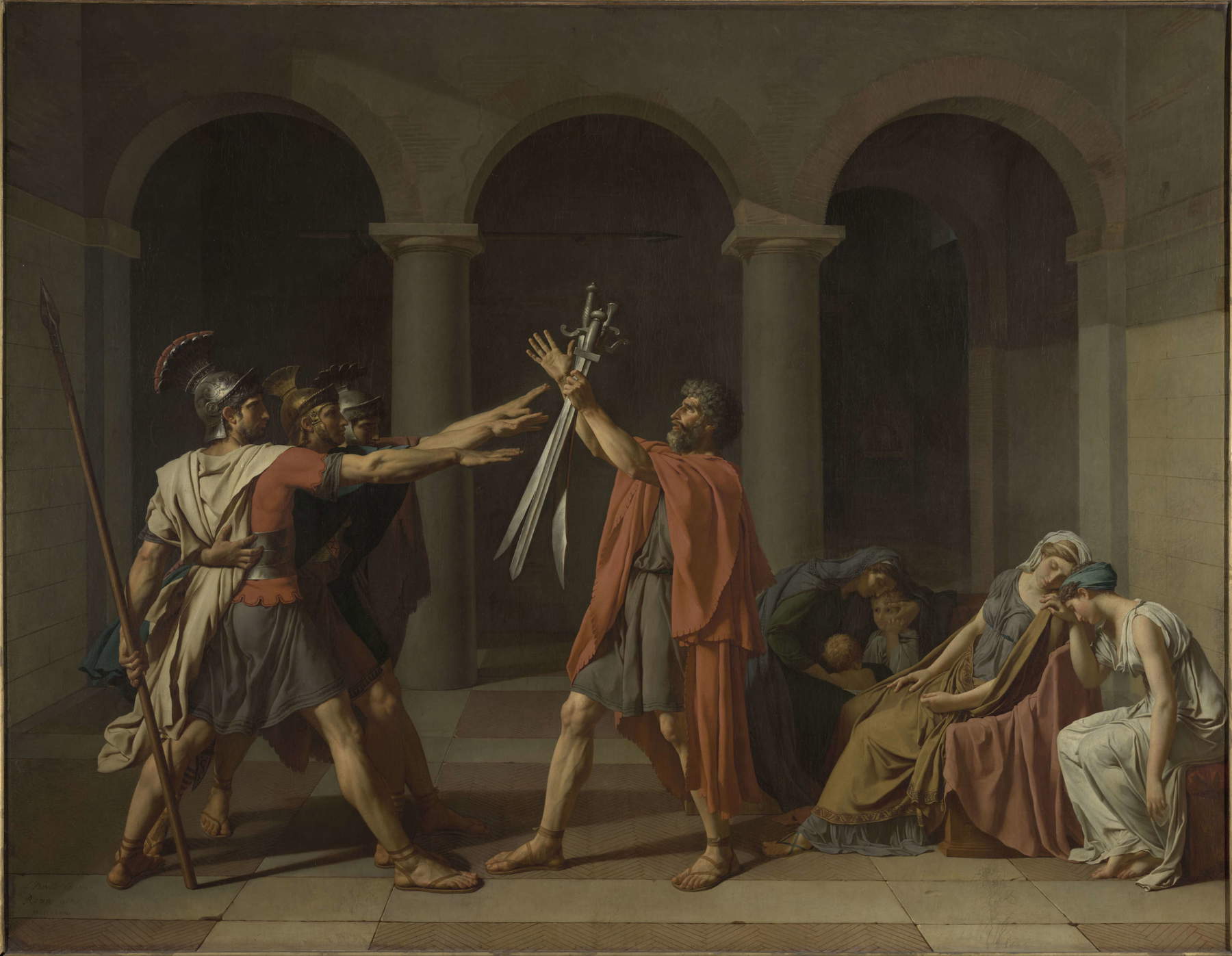
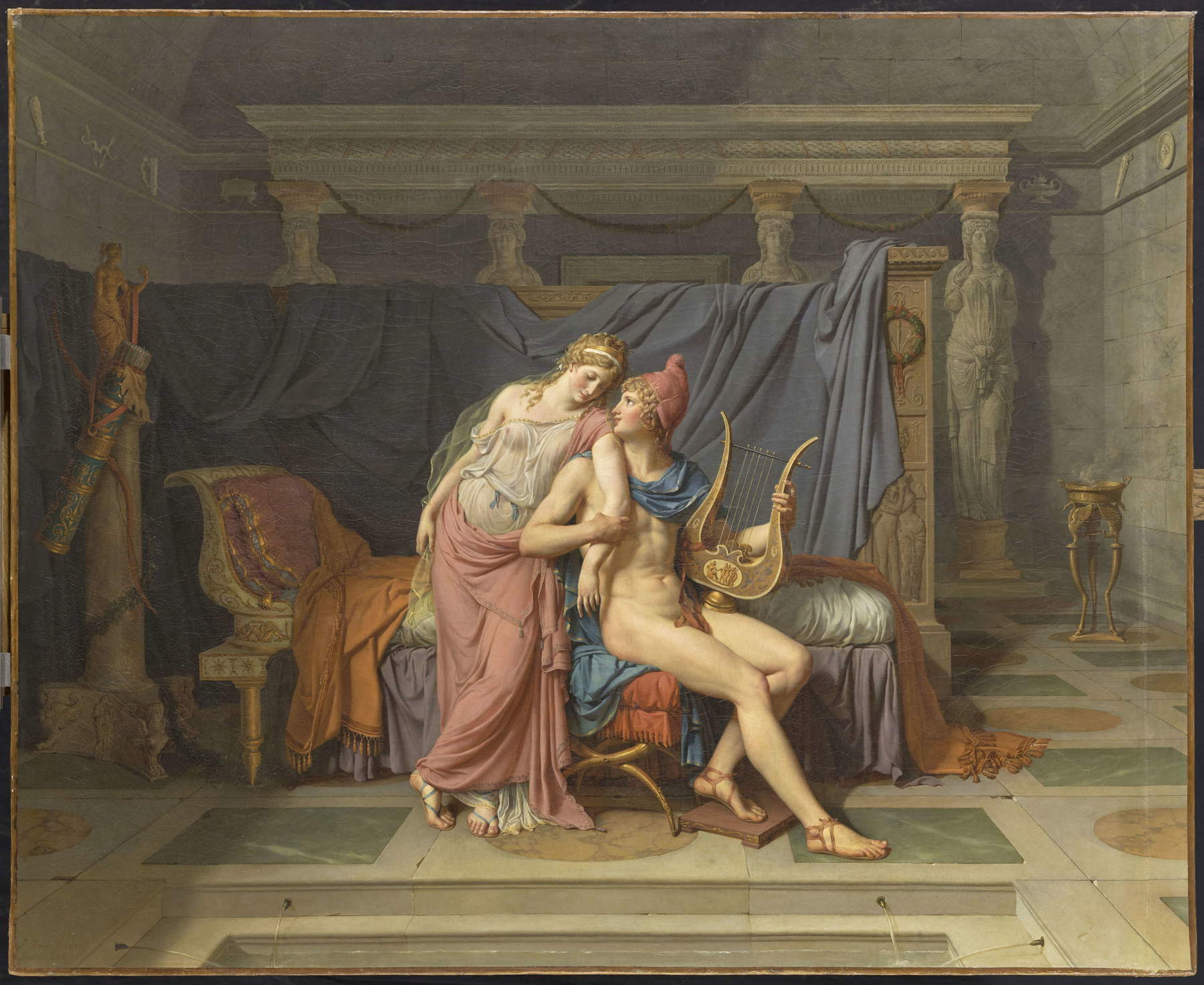
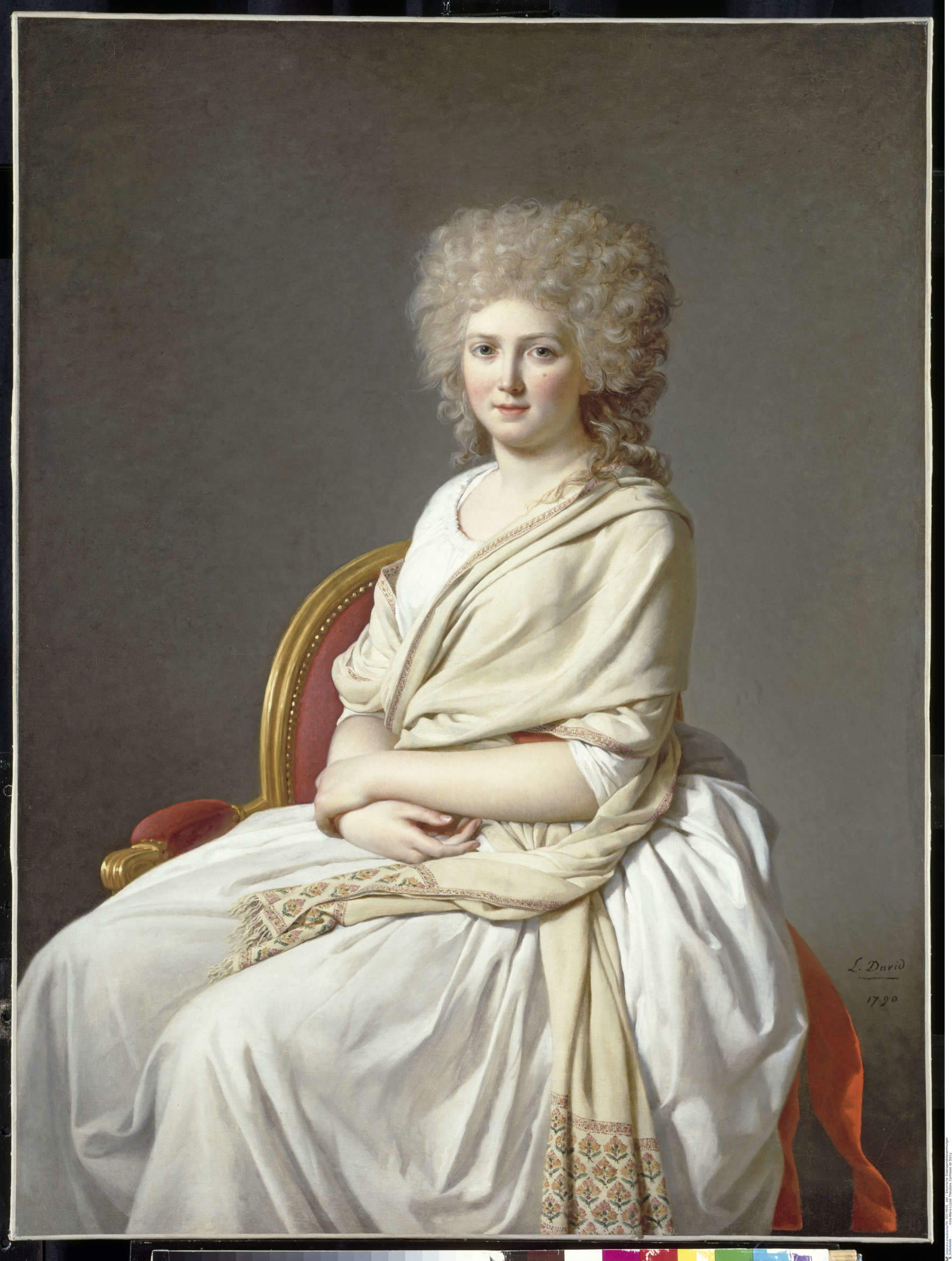
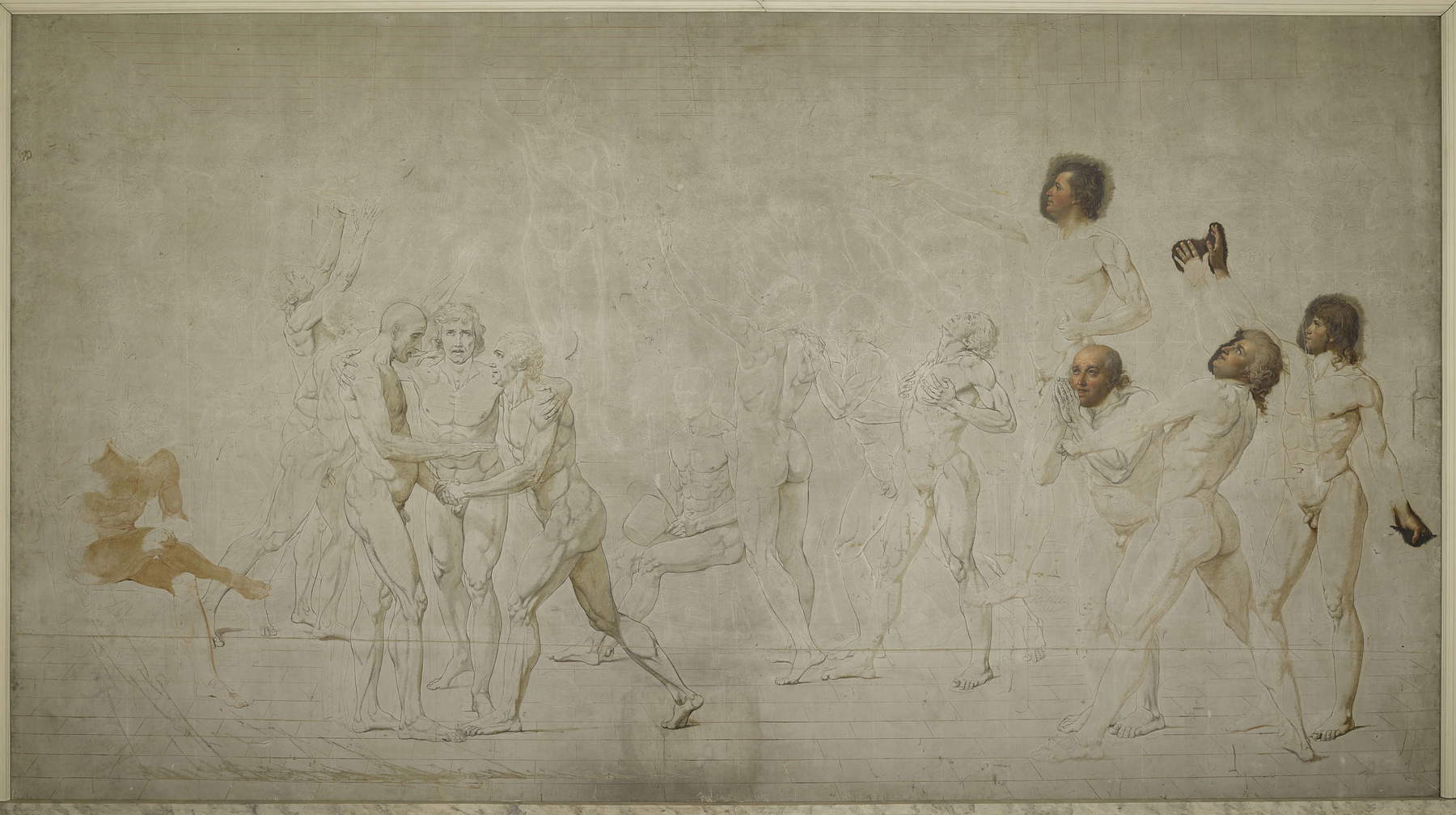
David was not simply an artist who witnessed this founding period of French history: he himself sought to be a protagonist of it. No other painter so dominated his era in France, both because of his artistic influence, which spread throughout Europe, and because of the high political positions he held in 1793-1794 alongside Robespierre, for which he paid the price of political exile following the fall of Napoleon.
Being a retrospective, the exhibition follows a chronological path, preceded by a prologue evoking David’s laborious quest for the Prix de Rome, which he failed to obtain three times. The exhibition focuses on several key themes that help us understand how David’s art still speaks to us today. David, a man of complex nature and difficult to understand, adored by some and hated by others, is steeped in the contradictions but also the hopes and energy of one of the most fertile, unstable and turbulent periods in French history, a founding moment of our modernity. To look at David’s work is to ask the question of engagement in a rapidly changing society. His political engagement developed gradually under the Ancien Régime, in liberal circles favoring a constitutional monarchy, for which he painted the mythical Death of Socrates (New York, Metropolitan Museum). Later, he became close to Robespierre, was elected deputy of Paris and voted for Louis XVI’s death sentence. During the two years of the Terror (1793-1794), he held several important positions, including: member of the Committee of Public Instruction, president of the Jacobin Club, member of the General Security Committee and even president of the National Convention. He organized the great revolutionary festivals, national funerals and pantheonizations, and painted pictures of the martyrs of the Revolution, namely Le Peletier, Marat and the young Coffin.
With the fall of Robespierre, he narrowly escaped the guillotine: he was imprisoned in 1794 and placed under house arrest in 1795. From 1799, fascinated by Bonaparte, whose famous portrait he painted on horseback while crossing the Alps, he entered his service. After the proclamation of the Empire, he dreamed of becoming a new Le Brun, something Napoleon would never allow him, however. The Emperor’s first painter, he immortalized the setting of power in the painting of the Coronation. With the return of the Bourbons to the throne, as a regicide, he had to go into exile, but the government quickly tried to bring the “father of the French school” back to Paris, though in vain. David received tributes from all over Europe as his paintings inaugurated the exhibition of the first contemporary art museum, the Musée des artistes vivants, which opened in Paris in 1818 at the Palais du Luxembourg.
David’s artistic expression was intimately linked to his political engagement, whether deeply sincere during the Revolution or opportunistic under the Empire. David offers a rare example of a case where the man and his work cannot be separated without devitalizing both. He was guided by an ethic of action, supported by the idea of glory: “to paint is to act.” A man of great culture, aware of the thinking of the intellectual elite, painting was for him an instrument of political and moral change. His art was essentially public and was meant to have an impact on society. David made the classical choice to address his time and this would enable him to capture its spirit. By referencingantiquity, the painter would embody the aspirations of men and women who were transforming from the status of subjects of a monarch to that of citizens. Always working simultaneously in his two areas of expertise (history painting and portraiture of his contemporaries), David constantly advanced in his time, striving to reveal the continuity between two spaces and times: his historical present and heroic antiquity. Therefore, the epithet “neoclassical,” often associated with his inspiration, is considered insufficient by the exhibition’s curators because it tends to reduce it to abstract formalism. However, at the core of David’s art is a real artistic project, but also a political, moral and social one. The first highlight of David’s early career was the Oath of the Horatii of 1784 (Louvre). This radically modern painting, which struck the whole of Europe with its boldness and the austerity of its composition, is considered “the first year of modern painting.” He anticipates the Oath of the Pallacord, a monumental canvas intended to celebrate this founding event of the Revolution, which will never be completed, as the time of history is faster than that of painting. Next, he made what is considered the icon of the Revolution: Marat Assassinated, a painting that achieves the ideal fusion of history painting, religious painting, contemporary subject matter and portraiture, and about which Baudelaire, some fifty years later, would write one of his finest texts. This painting, together with Bonaparte crossing the Alps, from 1800, constitutes one of the most powerful images of political communication, which, because of its radicalism, is permanently inscribed in memory.
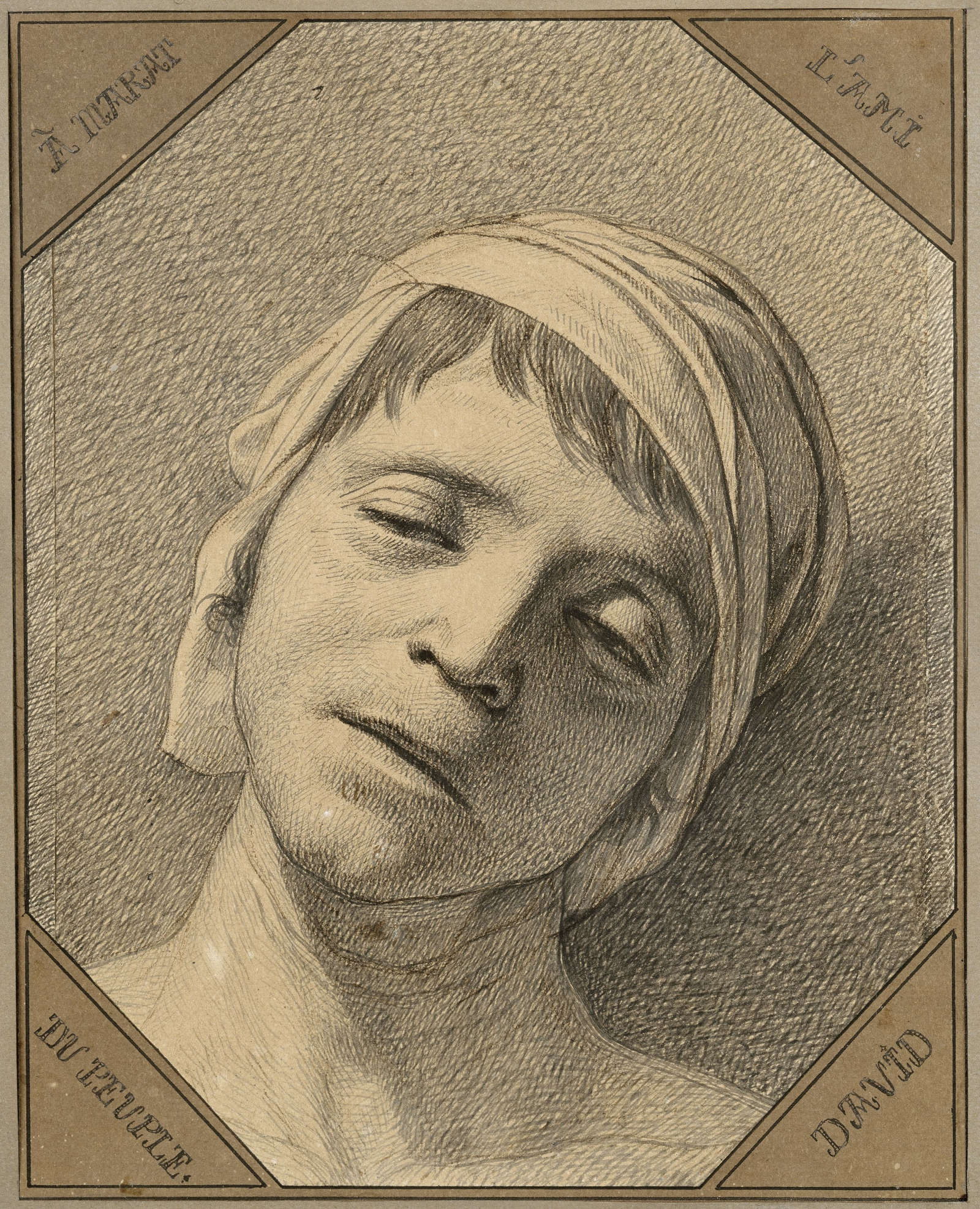
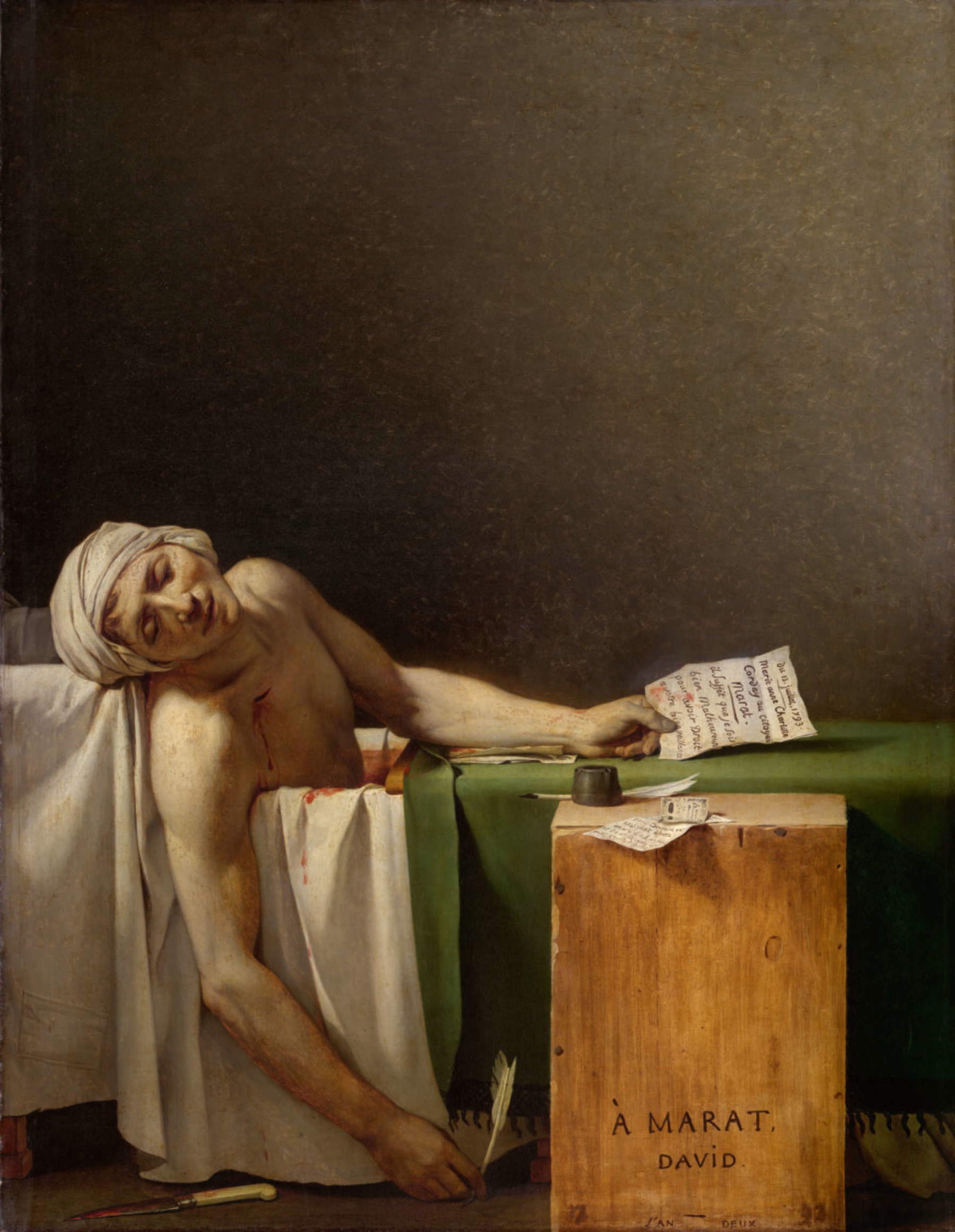
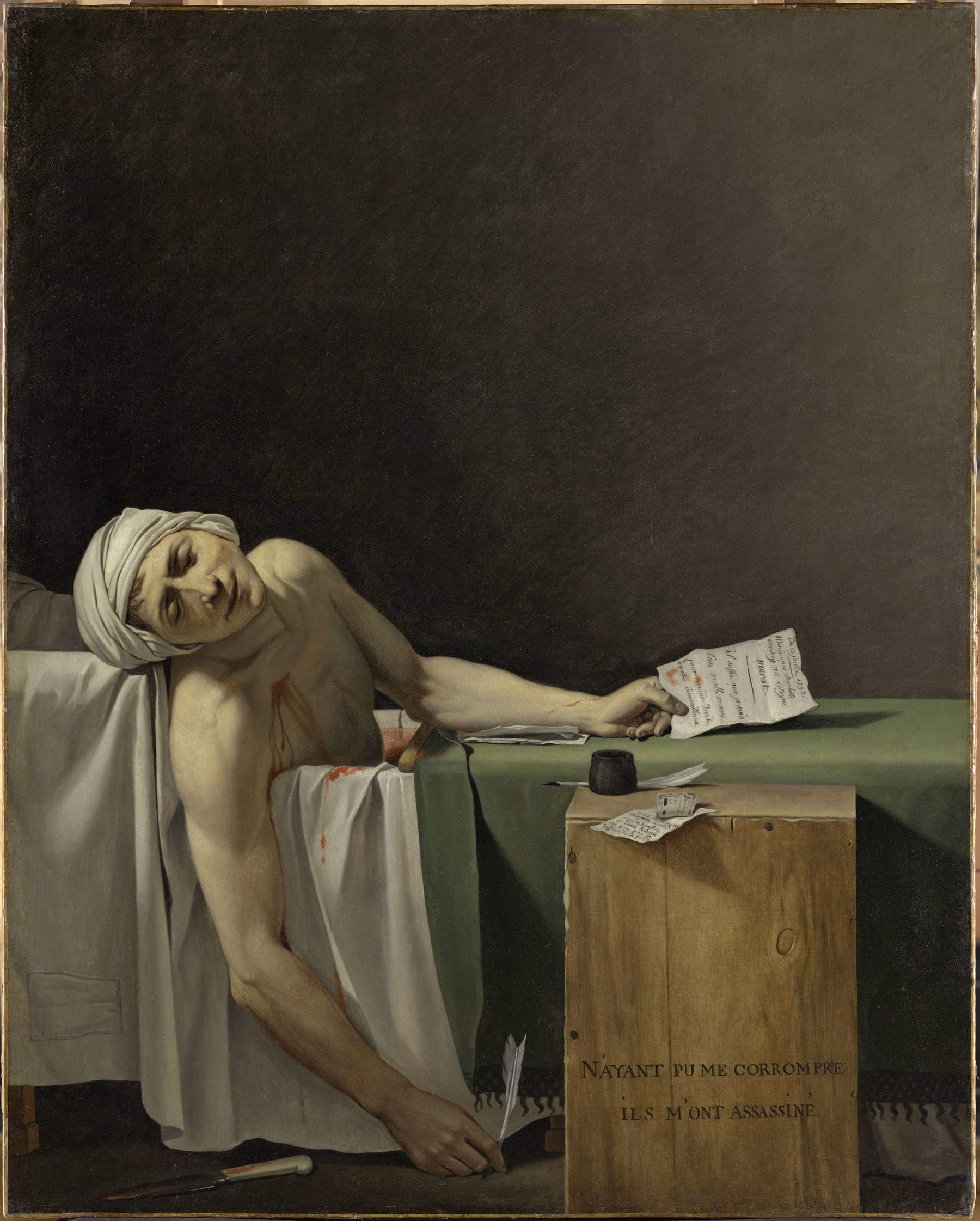
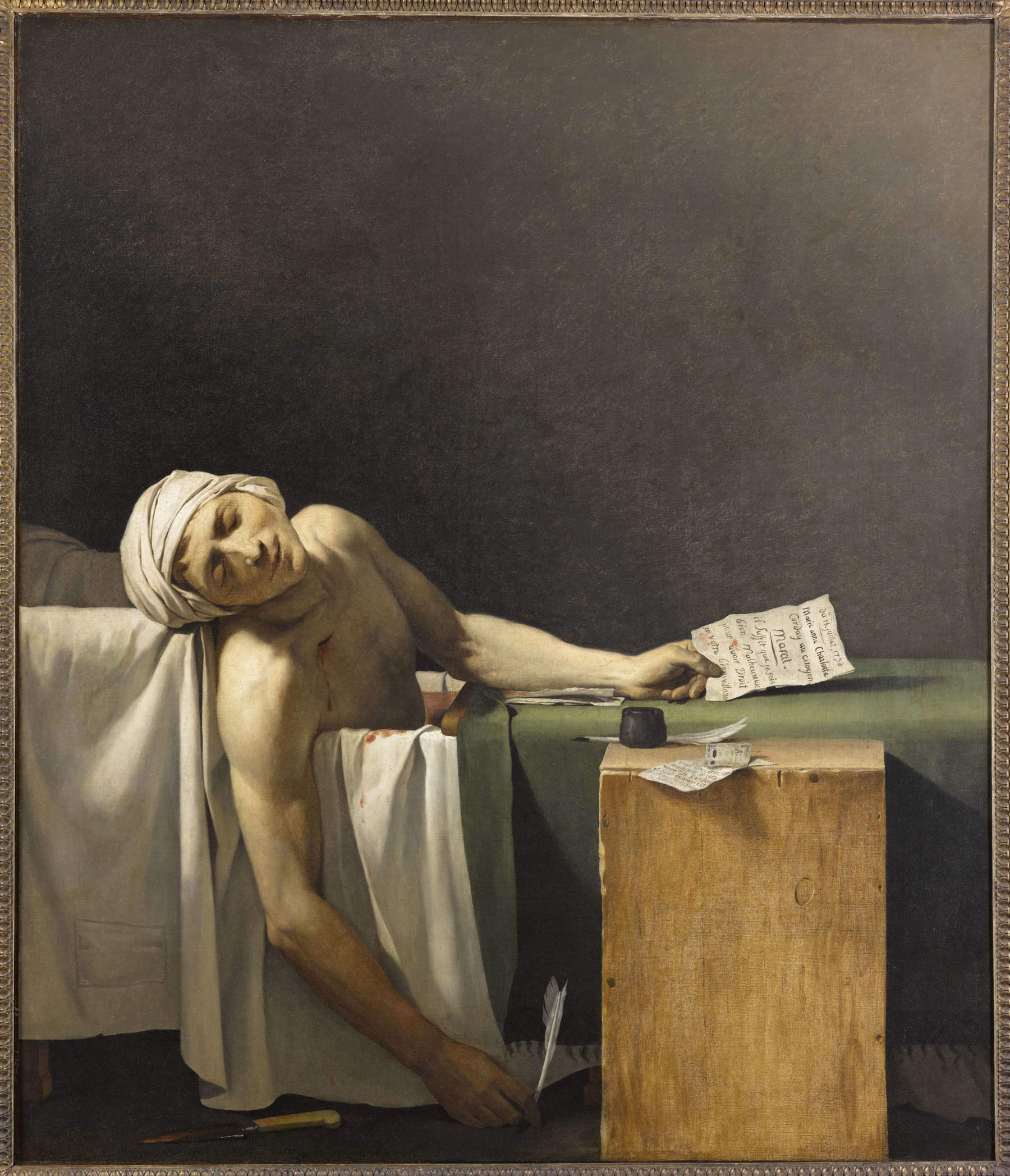
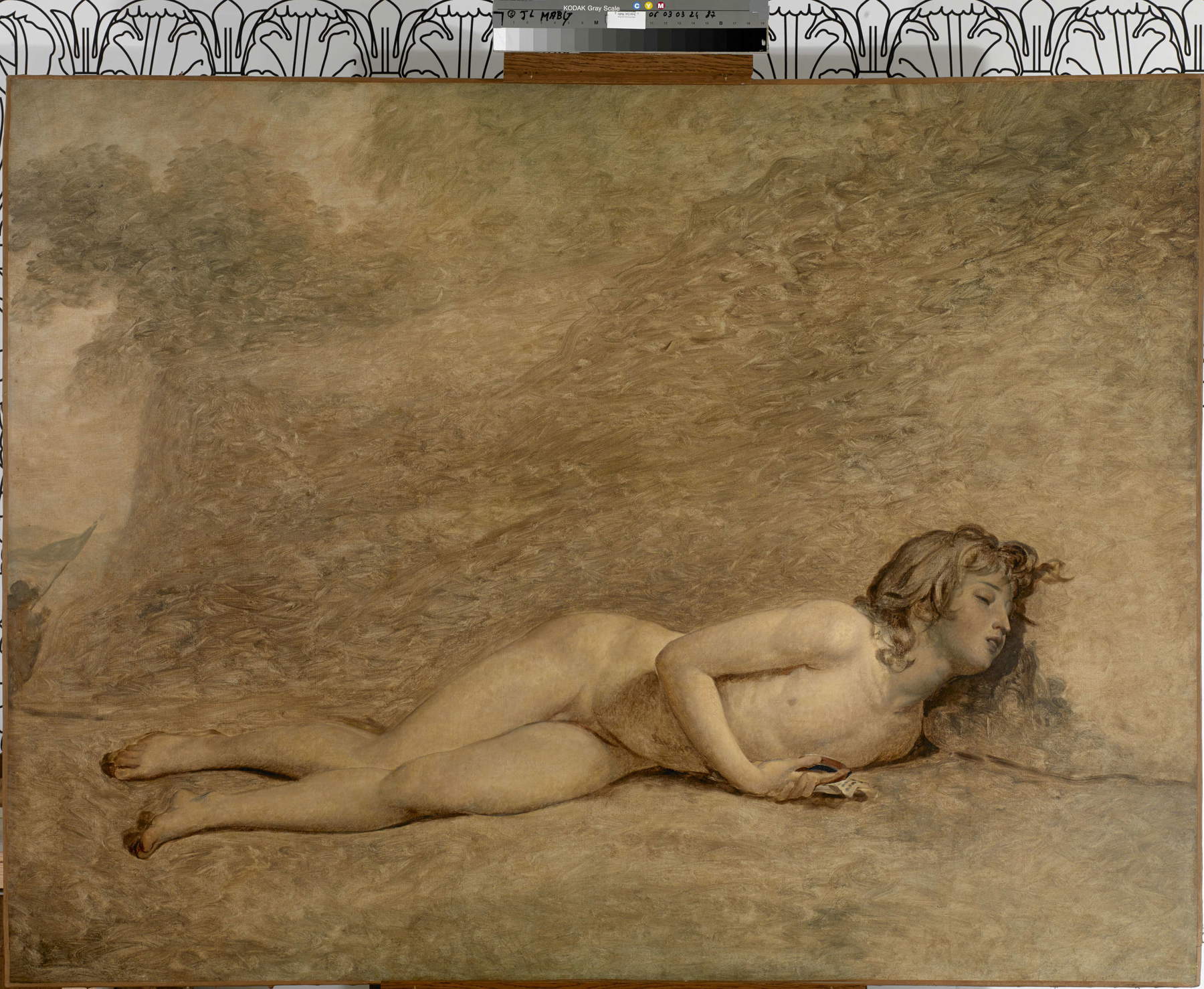
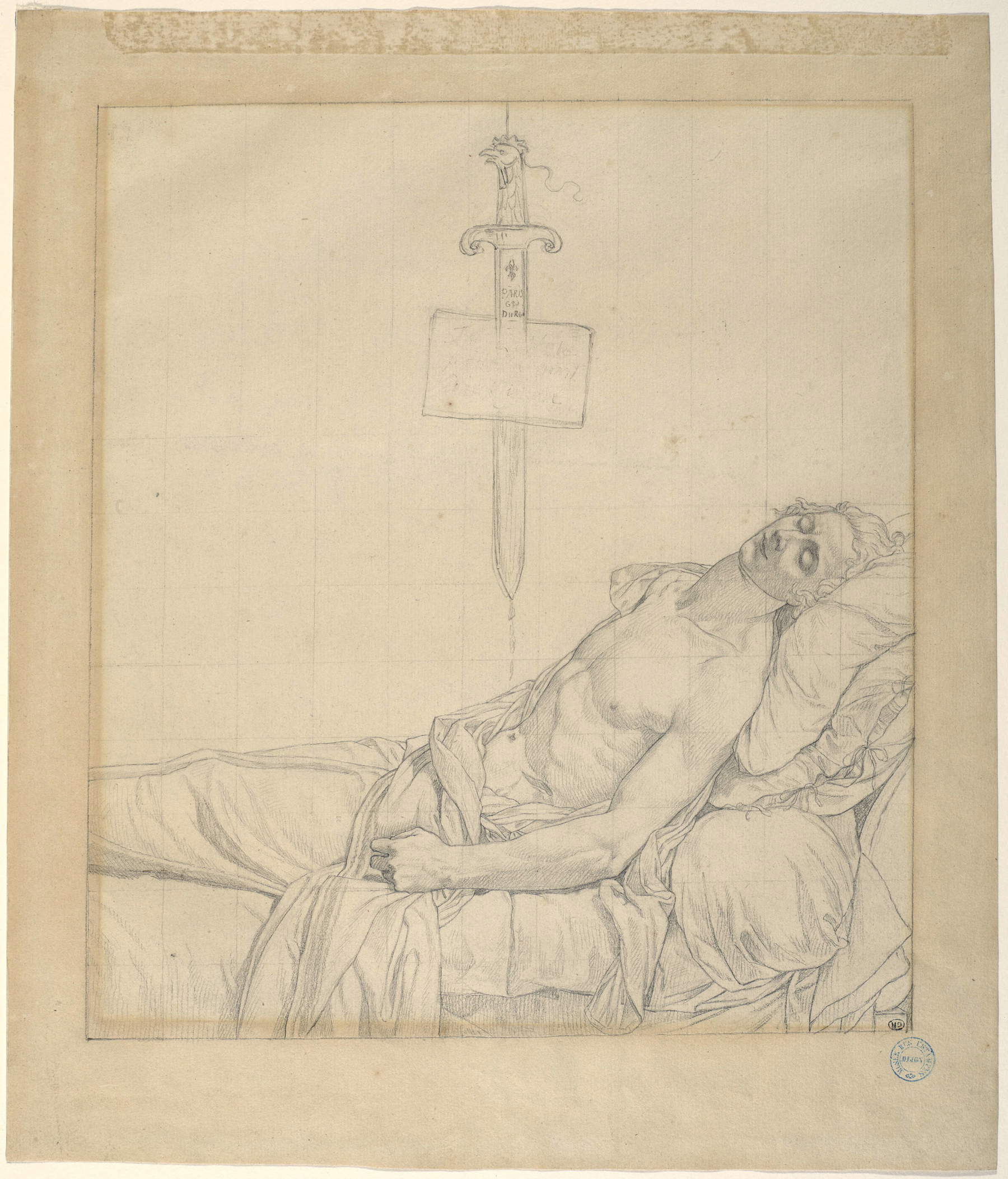
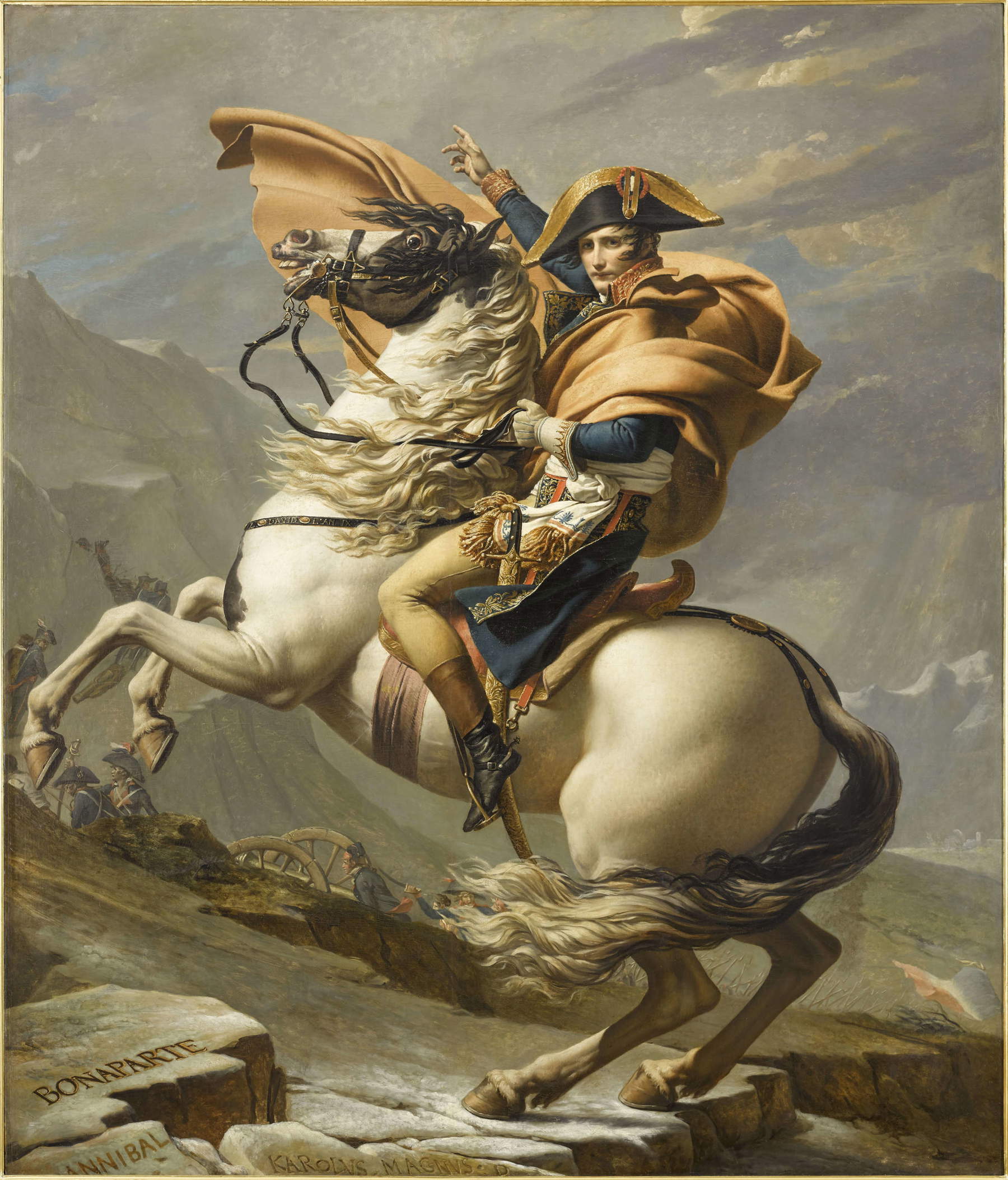
He returned to prominence in 1800 with Le Sabine, a work in which women played a central role, as it was they who ended the fratricidal wars between Romans and Sabines. This painting of reconciliation after the Revolution is contemporary with his most famous female portraits, particularly that of Madame Récamier, which remained unfinished because of a quarrel with her model, or that of Madame de Verninac, sister of Eugène Delacroix. In these works, David attached great importance to ancient fashion, of which he had been one of the promoters in the theater. His passion for theater prompted him to create what might be called the first “immersive installation” in art history. In fact, he exhibited his painting of the Sabine women, then his painting of the Coronation, and his last canvas, Mars and Venus, in front of a large mirror so that visitors would immerse themselves in the painting. David was also an experimenter. In the last years of his life, exiled to Brussels, he produced mythological, often lashing, sometimes sarcastic and sometimes disturbing works, in which realism barely touches on an ideal that was dissolving in the prosaic and temporarily pacified society of the 1920s.
One of the constants of David’s life and art is his fervent defense of freedom, both political and artistic. Through the combined action of his immense talent and his political consciousness, he had the authority to impose a reform of the arts that went far beyond the “regeneration” desired by the authorities at the end of the Ancien Régime and forced subsequent generations to position themselves in relation to it. The way he directed his workshop is a striking illustration of this. David trained three generations of painters from all over Europe who would dominate the art scene until the mid-19th century. From the beginning, he championed the freedom of the artist, in reaction to the academic system, which he saw as rigid. The first atelier, which brought together some of his brightest pupils (Gérard, Girodet, Gros), took place according to a model of emulation.
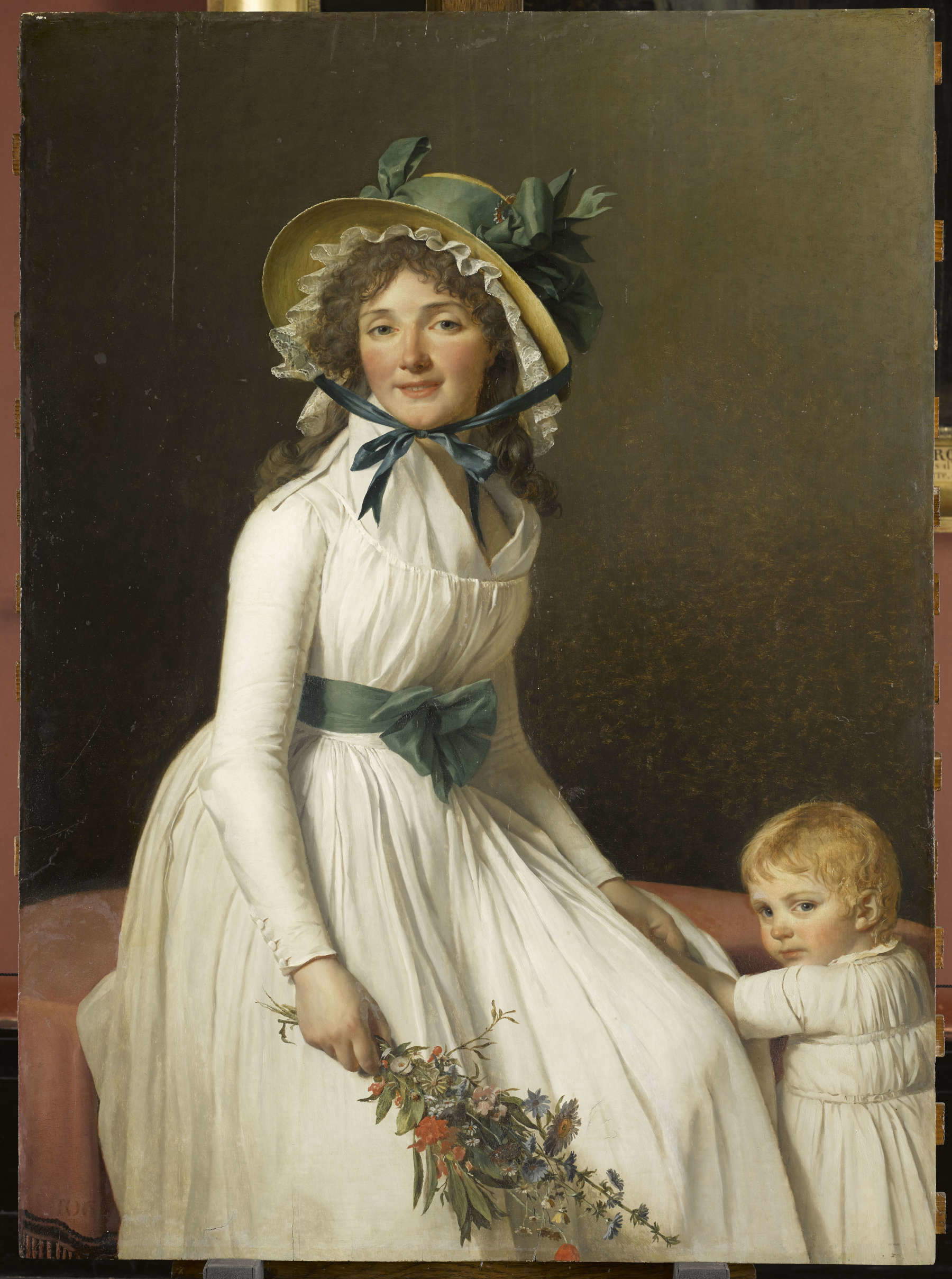
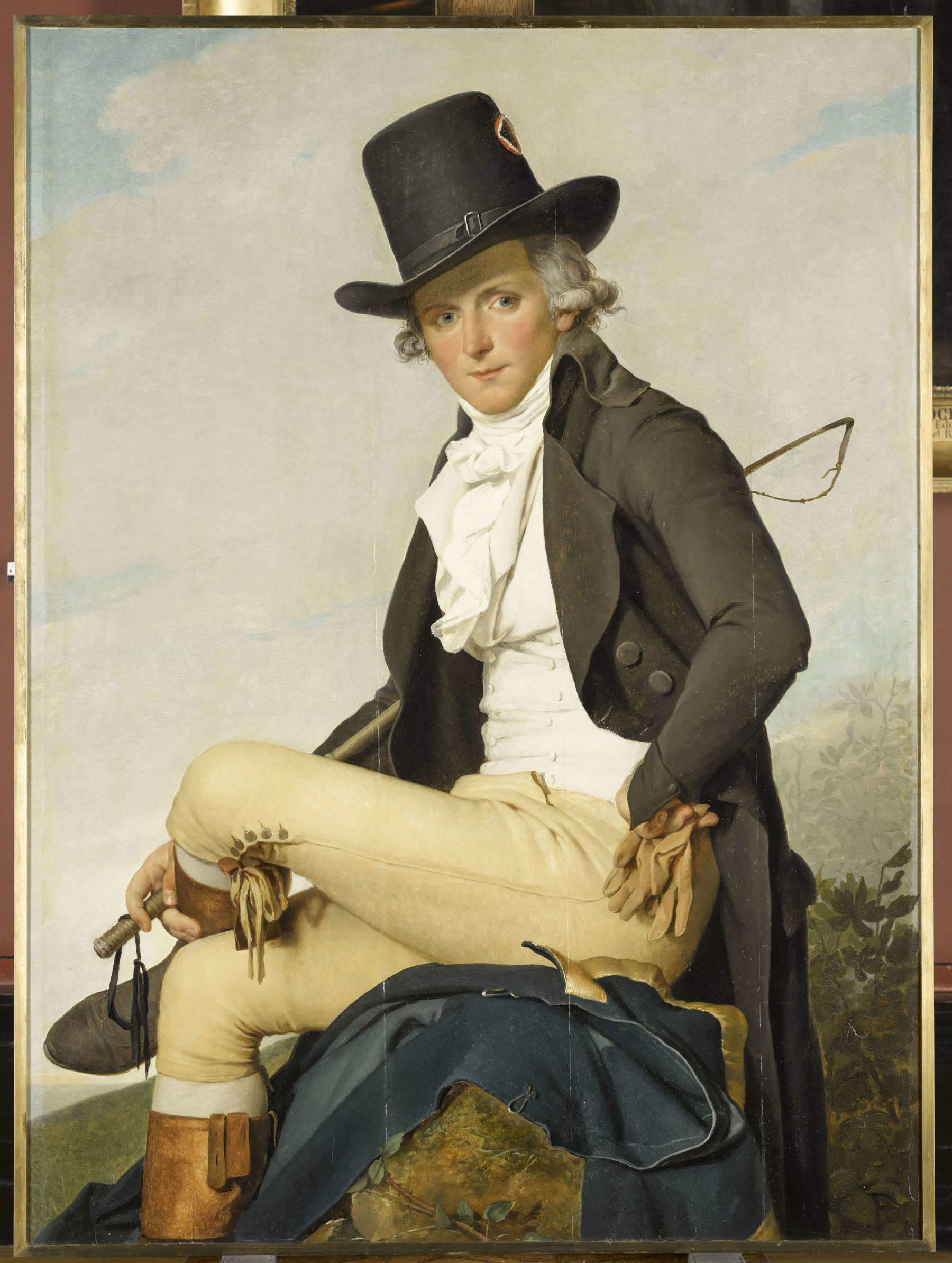
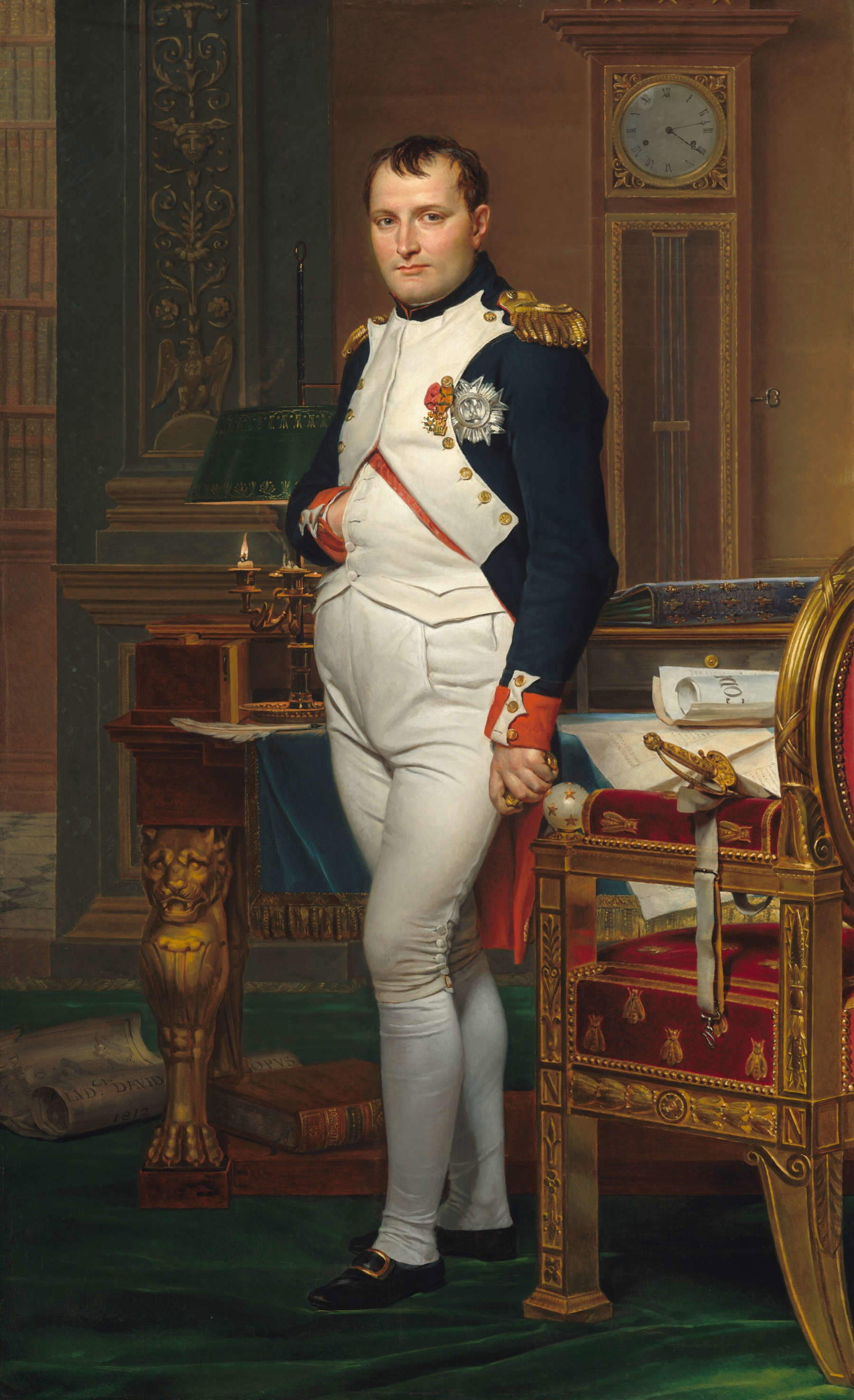
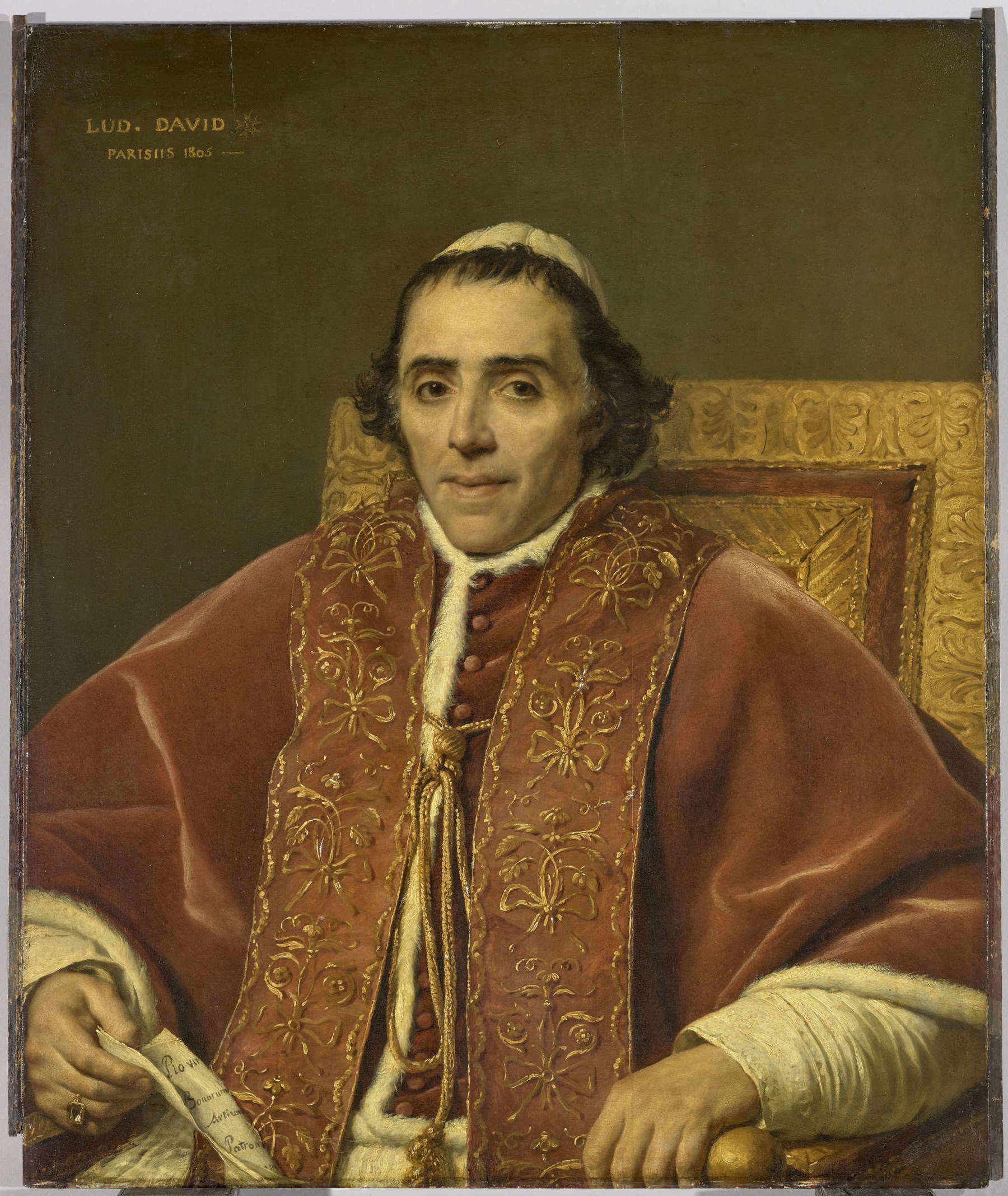
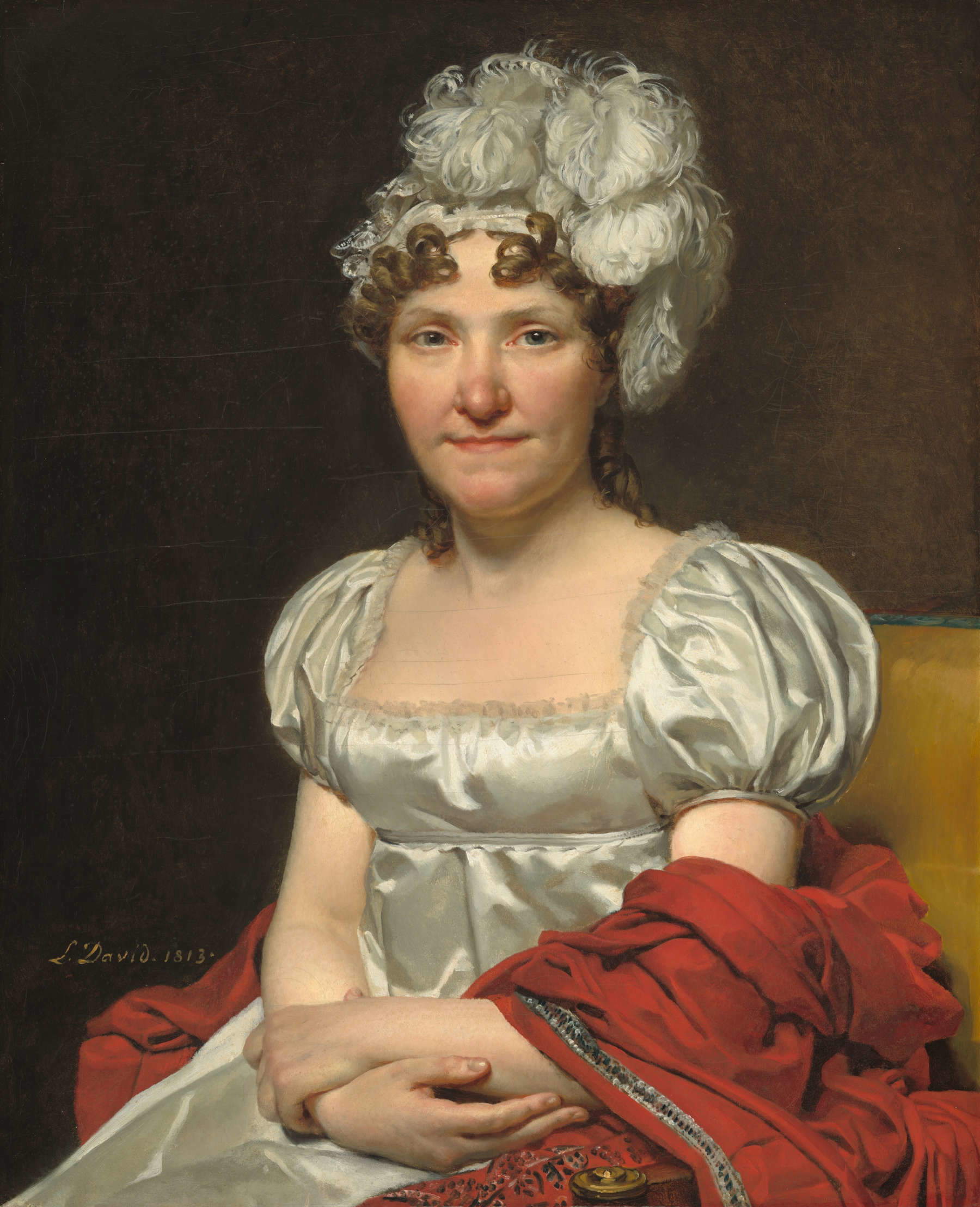
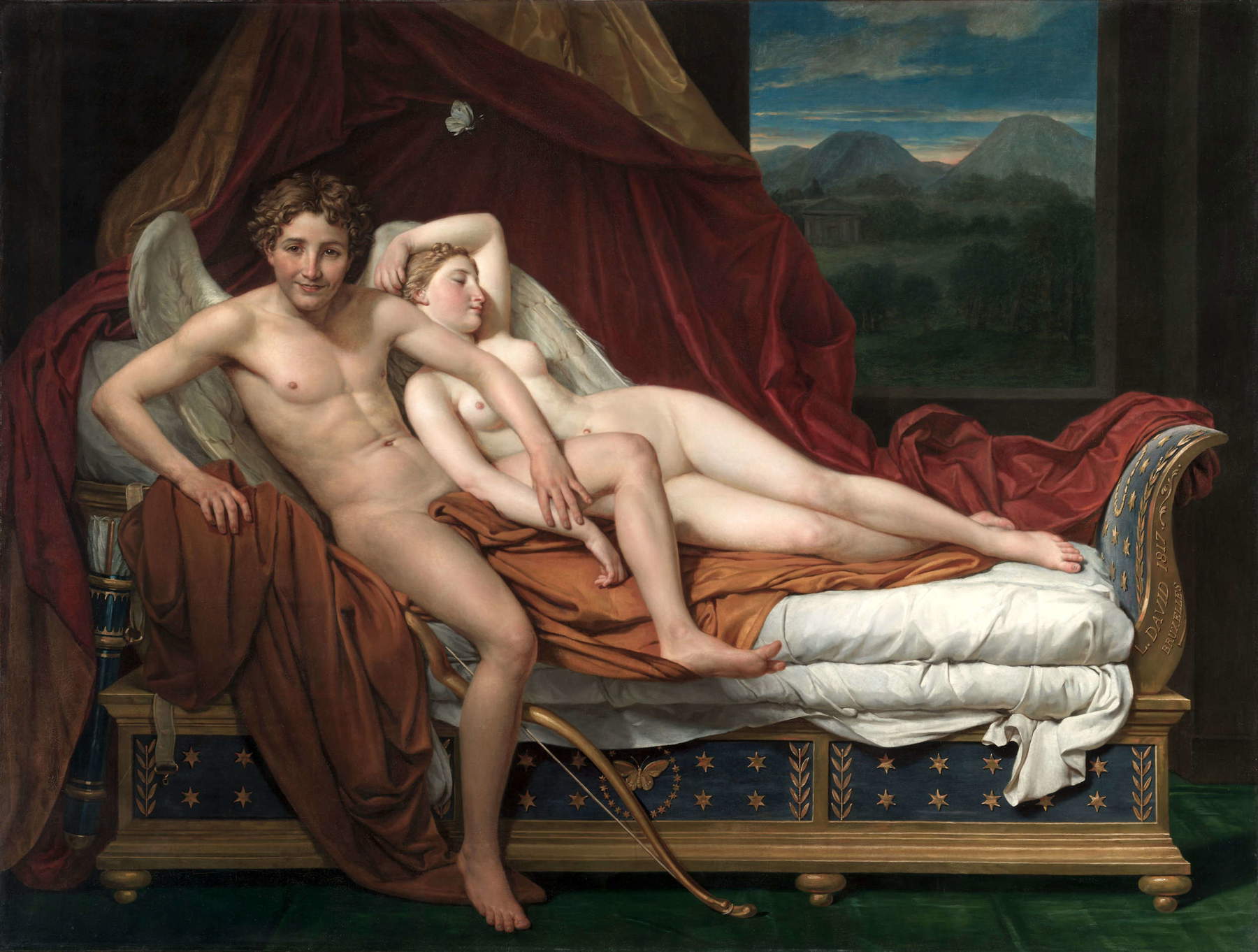
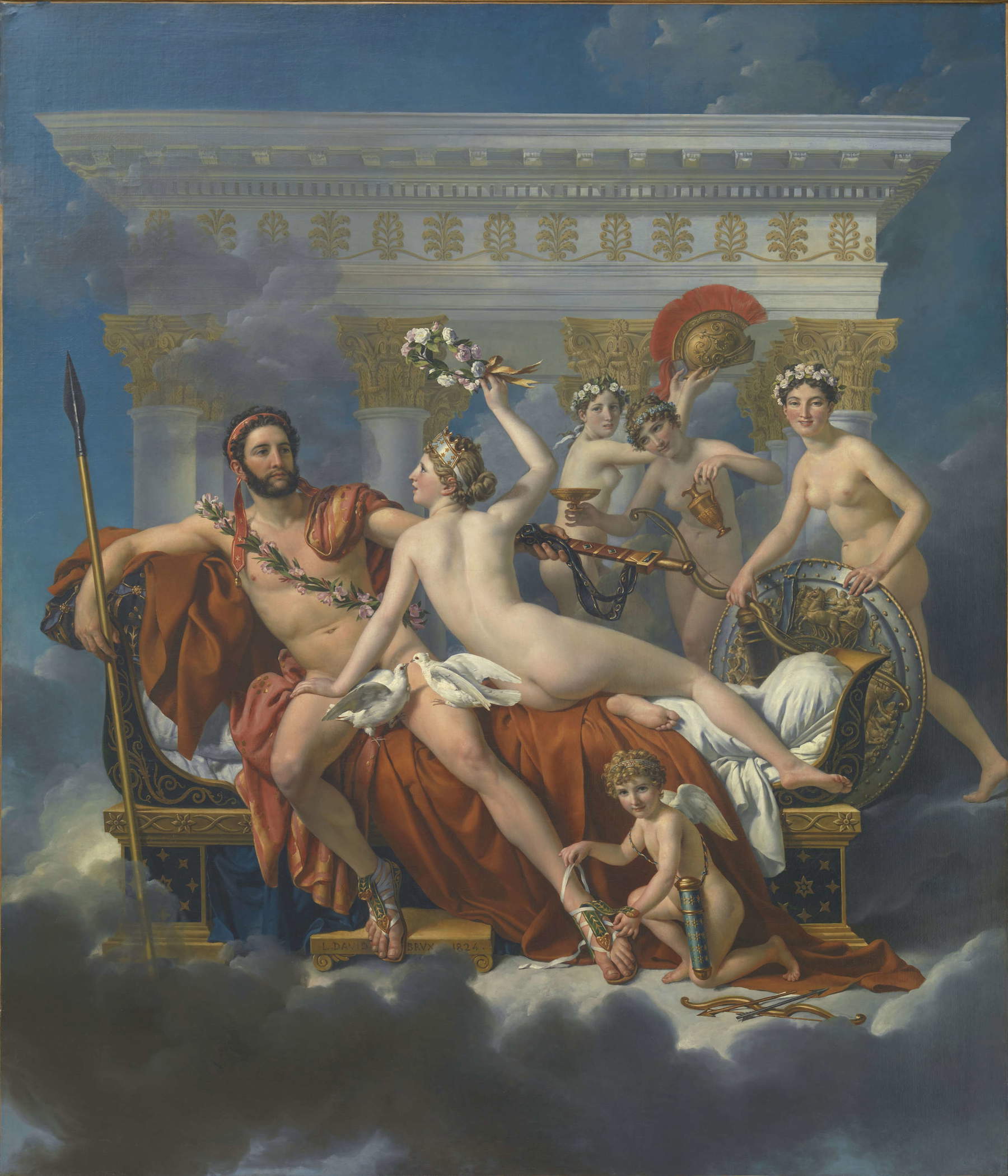
David was an artist who constantly reinvented himself, especially through contact with his pupils, far from the monolithic image one might have of him. The exhibition presents works by his students in different spaces along the way, contrasting with his own, particularly those of Ingres. This allows David to break out of his isolation and evoke the logic of emulation, imitation, misunderstanding, and rejection between David and his contemporaries.
The exhibition is accompanied by a catalog edited by Sébastien Allard, co-published by Musée du Louvre éditions and Hazan (360 pages, 140 illustrations, €49). Like the exhibition, the catalog offers a reinterpretation of David’s role and place, focusing on two essential aspects of his work: his engagement during the Revolution and his confrontation, after the fall of the Empire and his exile in Brussels, with the new generation, Ingres in particular, whom he helped shape to a great extent.
The book is divided into two parts: the first consists of an essay by Sébastien Allard, whose purpose is to renew the perspective on the artist by restoring coherence to a life sometimes fragmented by historians according to the different phases of the Revolution. The second includes an essay by Côme Fabre on the links between David and the Louvre, a biographical account written by Aude Gobet, head of the Department of Studies and Documentation in the Department of Painting, and a chronology of David’s “great moments,” from his death to the present day, edited by Morgane Weinling, an art historian.
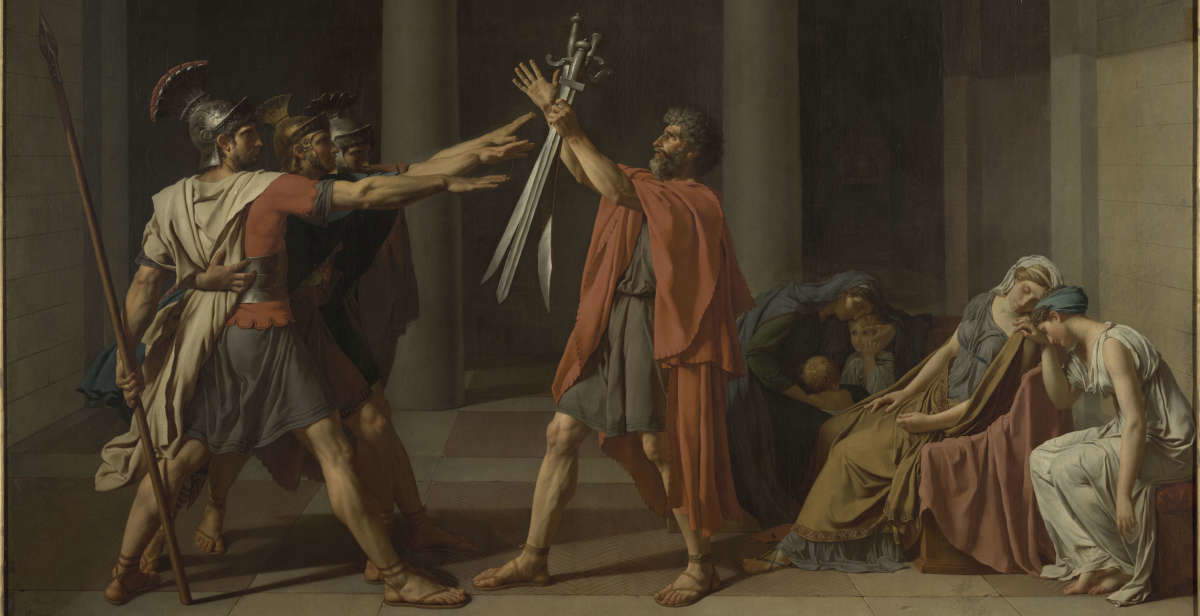 |
| A major exhibition at the Louvre on Jacques-Louis David, the painter of the revolution and Napoleon |
Warning: the translation into English of the original Italian article was created using automatic tools. We undertake to review all articles, but we do not guarantee the total absence of inaccuracies in the translation due to the program. You can find the original by clicking on the ITA button. If you find any mistake,please contact us.